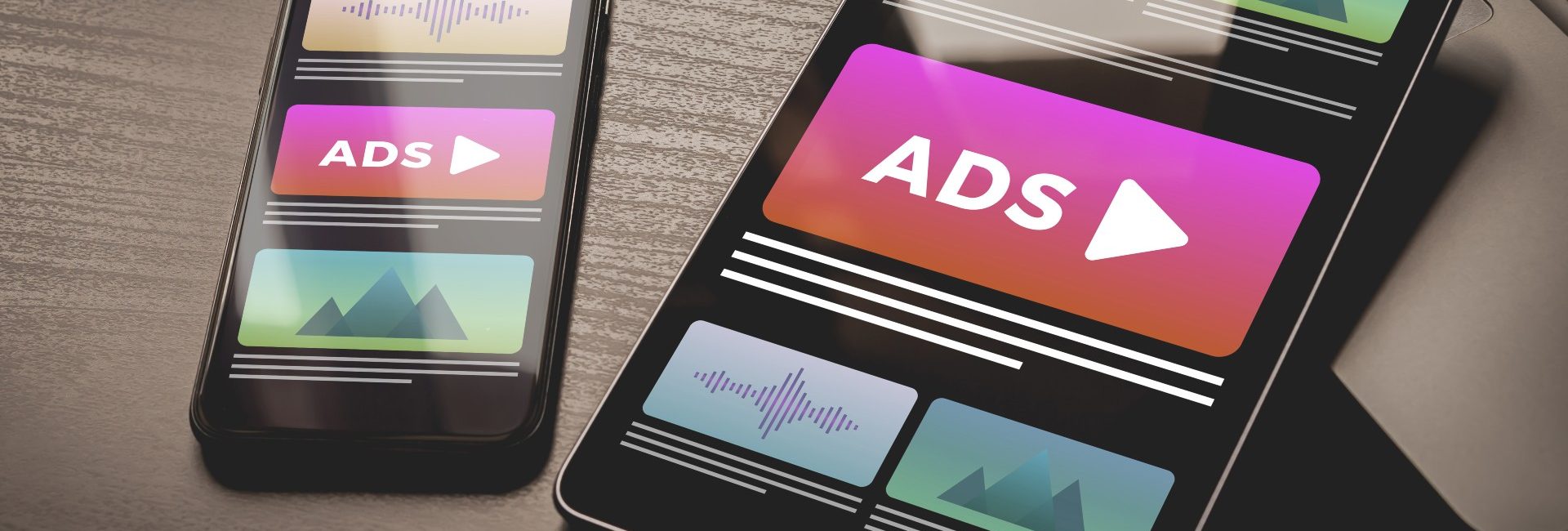

Everything you need to know about how and why to get started with programmatic advertising
The concept of programmatic advertising is quite simple: making sure the right message gets delivered to the right person at the right time. To achieve this goal, you need correctly collected data and advanced technology in which algorithms determine whether a person falls within the target group to see your ad.
Programmatic advertising gained a lot of popularity over the few last years. You buy and sell advertising inventory in real-time through an automated system. In the system, algorithms evaluate users based on behavior, demographics, cookie data, and other criteria. In this way, the user always sees the most suitable advertisement. Digital out-of-home (DOOH), streaming, tv-, video- and voice ads are also part of the possibilities.
Source: The Trade Desk
What are the benefits of programmatic advertising?
- Efficiency
Due to the machine- and AI-driven algorithms, there is minimal human intervention. This makes programmatic advertising a very efficient process.
- Comprehensive targeting
By using first and third parties, you can put together a very accurate target group profile. In the future, advertisers will even be able to target their audience based on content without the need for cookies. For this, the user profiles (first-party data) are combined with the publisher’s content and the advertisement is shown in the best place.
- Real-time insight and optimization
As an advertiser, you have real-time insight into the performance of your campaign. You can use this data to collect more information about the target group and the campaign. You can also immediately see how the campaign is performing and how the budget is being spent. Is the campaign going differently than planned? Then you can immediately optimize the campaign with the information gained to achieve the desired results.
- Budget well spent
Programmatic advertising is based on CPM: costs per 1000 ad views. The CPM price varies based on the quality and targeting level. The more specific you target, the higher the price. In addition, there is a variation in price per industry, device, format, and placement on the page. The prices vary between 2- and 10-euros CPM. Due to the low costs per CPM, you can also work with limited marketing budgets.
The different types of Programmatic Media Purchasing
There are four different ways to purchase programmatic advertising. These are real-time bidding (open auction), private marketplace (invitation auction), preferred deals (unreserved fixed price), Programmatic Guaranteed (Automated and Guaranteed).
- Real-time bidding (RTB)
RTB is also known as an open auction. The advertising spaces are open to everyone and are sold to the highest bidder. Transactions are done in real-time in the time it takes a website to load (100ms).
Although the highest bidder gets the slot, they often don’t have to pay their highest bid to get the slot. A “second prize auction” is used. For example: the highest bidder only pays € 0.01 more than the second bidder.
RTB is easy to purchase and optimize, but it is not very transparent. You can view the categories of publishers, but it is not always clear where the ad will eventually be shown.
- Private Marketplace (PMP)
PMP is an invitation-only auction. In terms of price, it works the same way as RTB. PMPs are mainly used by websites with a large reach. The advantage over RTB is that you know exactly where the ad will be shown, so you can properly measure the ROI.
- Preferred deals
Preferred deals allow you to purchase advertising space without bidding for it. As an advertiser, you get an insight into the ad inventory, and you can then decide whether you want to buy it or not.
- Programmatic Guaranteed
Programmatic guaranteed advertising is very similar to traditional ad buying. The stock is reserved for the advertiser and its price is fixed. Programmatic guaranteed advertising is mainly used by advertisers who know exactly where they want to place the advertisements and who have a sufficient budget to be able to do this.
Ad sizes in programmatic advertising
As mentioned in the intro of the blog post, there are five different ad sizes in programmatic advertising. Depending on your budget, audience, and campaign goals, you select the best fitting ad size for your campaign.
- Display ads
The term display ads is used within programmatic advertising for ads that are displayed in the header, footer, or sidebar of a website.
Advertisers use display networks like Google, Microsoft, and Snapchat to make buying and selling ad space easier.
- Video ads
As video content becomes more and more popular, the popularity of programmatic advertising in video is also increasing. These ads appear in the form of a pre-, mid- or post roll in the video player. You see this form of advertising on YouTube, for example. Another form of video ads is outstream ads. These are the videos that you see as a pop-up between articles on websites. And finally, there are in-display ads. You’ll find these ads among search results and video recommendations on platforms like YouTube.
- Social Ads
There is a huge amount of data available from the various social media platforms. Programmatic social ads use this data to decide who sees the ads, ad size, ideal time, and frequency caps.
- Native ads
Native ads are ads that look like editorial content on the platform they appear on. With programmatic native advertising, advertisers work with a DSP (demand side platform) to choose which impressions you buy and at what price. Publishers, on the other hand, sell their advertising space through an SSP (supply side platform). Research by IPG & Sharethrough has shown that consumers view native ads 53% more often than display ads.
- Digital out of home (DOOH)
Digital out of home is the digitalized and optimized version of traditional out of home advertising. With traditional DOOH, sales have consisted of advertisers interacting with a network to manually agree on targeting and pricing, etc. Programmatic DOOH sounds difficult, but it follows the same media buying processes as RTB and programmatic advertising.
The future looks bright for programmatic advertising and now is an excellent time to capitalize on the uptrend. Programmatic advertising is a very accessible way of advertising, being suitable for smaller budgets as well as larger budgets. Need help getting started on your programmatic advertising campaign? We’re here to help!

